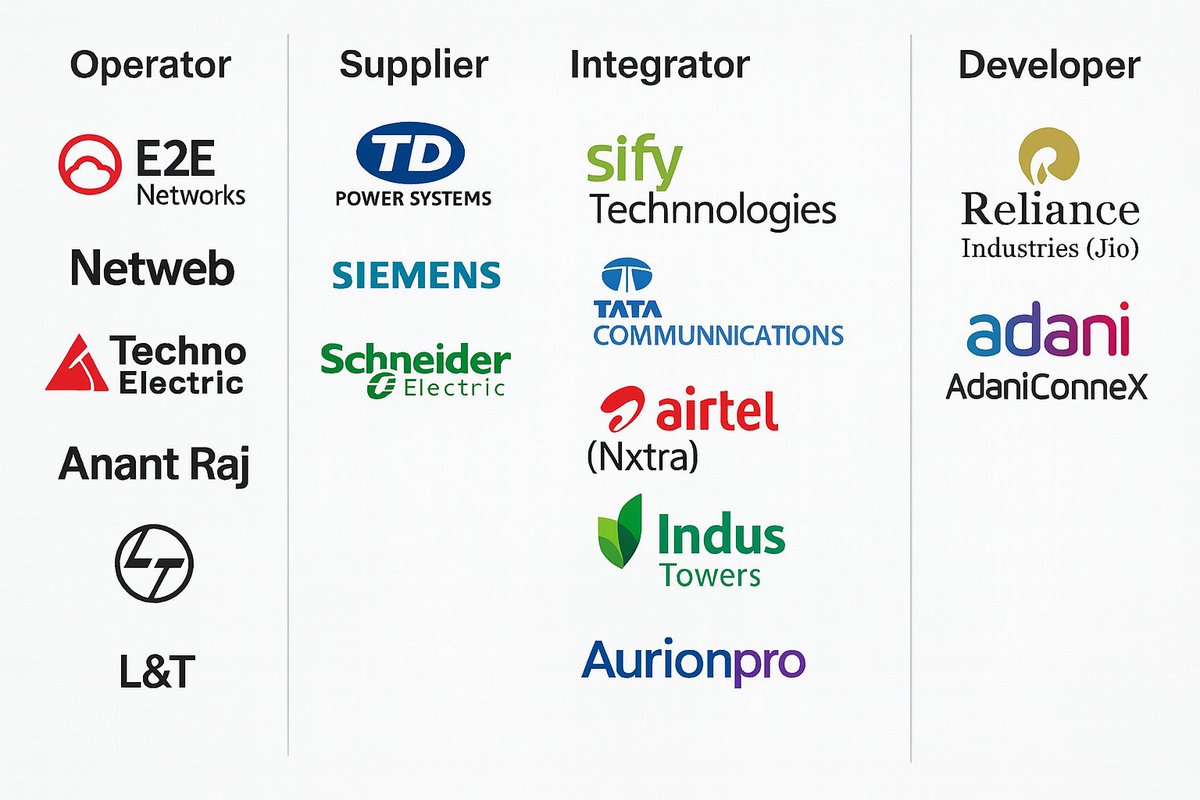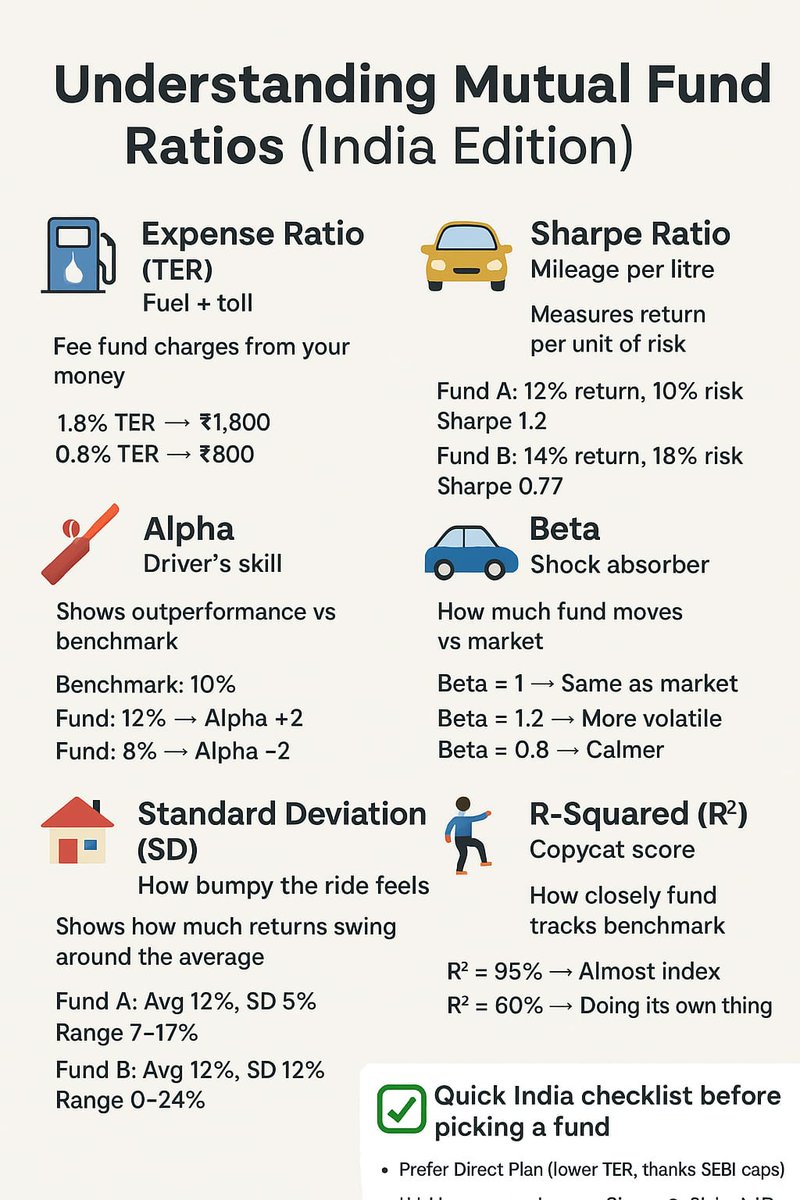🚢🇮🇳 India’s Big Maritime Push – Samudra Se Samriddhi 🧵
🇮🇳 pays ₹6 lakh CR annually to foreign shippers.
PM Modi unveiled a historic plan to make India a global maritime power 🌍.
Here’s a complete breakdown of the projects, MoUs & listed stocks that could benefit 👇
🇮🇳 pays ₹6 lakh CR annually to foreign shippers.
PM Modi unveiled a historic plan to make India a global maritime power 🌍.
Here’s a complete breakdown of the projects, MoUs & listed stocks that could benefit 👇

🔹 Massive Infrastructure Push
New container terminals at Kolkata & Paradip
Cargo berths at Paradip & Tuna Tekra (Kandla)
Strong sea-wall & revetments at Chennai Port 🌊
Ship repair hubs at Patna & Varanasi
Mumbai International Cruise Terminal 🚢
➡️ This means more cargo handling, new trade hubs & global-scale passenger traffic.
New container terminals at Kolkata & Paradip
Cargo berths at Paradip & Tuna Tekra (Kandla)
Strong sea-wall & revetments at Chennai Port 🌊
Ship repair hubs at Patna & Varanasi
Mumbai International Cruise Terminal 🚢
➡️ This means more cargo handling, new trade hubs & global-scale passenger traffic.

🔹 Green & Energy Projects
Green Bio-Methanol Plant at Deendayal Port 🌱
HPLNG regasification terminal at Charra Port
280 MWac Solar + 600 MW Green Shoe initiative
PM-KUSUM: 475 MW solar for farmers in Gujarat
➡️ Push for cleaner shipping fuels & renewable-powered ports.
Green Bio-Methanol Plant at Deendayal Port 🌱
HPLNG regasification terminal at Charra Port
280 MWac Solar + 600 MW Green Shoe initiative
PM-KUSUM: 475 MW solar for farmers in Gujarat
➡️ Push for cleaner shipping fuels & renewable-powered ports.
🔹 Industry MoUs
Cochin Shipyard + HD KSOE (shipbuilding JV)
SCI, BPCL, HPCL, IOCL for vessel aggregation
Multiple MoUs with Cochinship, GRSE, Mazagon Dock etc.
State-level shipbuilding ecosystem pacts (AP, Odisha, Gujarat, Maharashtra, TN)
➡️ A public-private fleet building alliance in the making.
Cochin Shipyard + HD KSOE (shipbuilding JV)
SCI, BPCL, HPCL, IOCL for vessel aggregation
Multiple MoUs with Cochinship, GRSE, Mazagon Dock etc.
State-level shipbuilding ecosystem pacts (AP, Odisha, Gujarat, Maharashtra, TN)
➡️ A public-private fleet building alliance in the making.
🔹 Projects of Gujarat Govt
100% solarisation of Dhordo village
New academic + hospital infra (Jamnagar, Rajkot, Surat)
45 MW Waste Land Solar project
➡️ Gujarat doubling down as India’s maritime + green energy hub.
👇
100% solarisation of Dhordo village
New academic + hospital infra (Jamnagar, Rajkot, Surat)
45 MW Waste Land Solar project
➡️ Gujarat doubling down as India’s maritime + green energy hub.
👇
🔹 Listed Stocks to Watch
Shipping Operators: SCI, Great Eastern, Essar, Seamec, Global Offshore, ABS Marine, Sadhav, Shahi, Chowgule, Shreeji, Transworld
Shipbuilders: Cochin Shipyard, Garden Reach (GRSE), Mazagon Dock
Ports & Terminals: Adani Ports, Gujarat Pipavav, JSW Infra, Gateway Distriparks, Allcargo, Aegis Logistics/Vopak
Dredging: Dredging Corp of India
Shipping Operators: SCI, Great Eastern, Essar, Seamec, Global Offshore, ABS Marine, Sadhav, Shahi, Chowgule, Shreeji, Transworld
Shipbuilders: Cochin Shipyard, Garden Reach (GRSE), Mazagon Dock
Ports & Terminals: Adani Ports, Gujarat Pipavav, JSW Infra, Gateway Distriparks, Allcargo, Aegis Logistics/Vopak
Dredging: Dredging Corp of India
1️⃣ Shipping Operators (Shipowners & Offshore)
Shipping Corporation of India (SCI)
PSU giant, carries crude, dry bulk, containers.
✅ Upside: Govt divestment, rising crude trade.
⚠️ Risk: Global freight volatility.
Great Eastern Shipping (GESHIP)
India’s largest private shipowner. Tankers + dry bulk fleet.
✅ Upside: Freight cycle tailwinds.
⚠️ Risk: Cyclical downturn.
Essar Shipping
Dry bulk, tankers, offshore rigs.
✅ Upside: Group restructuring, asset revival.
⚠️ Debt & legacy issues.
SEAMEC Ltd
Offshore oilfield & subsea services.
✅ Upside: Offshore drilling revival.
⚠️ High dependence on crude cycles.
Global Offshore Services
Offshore support vessels for oil & gas.
✅ Upside: ONGC / global E&P activity.
⚠️ Asset-heavy, leveraged.
ABS Marine / Sadhav / Shahi/ Chowgule / Shreeji / Transworld
Smaller but niche shipping & coastal logistics players.
✅ Upside: Coastal shipping push, Sagarmala.
⚠️ Thin liquidity, small balance sheets.
Shipping Corporation of India (SCI)
PSU giant, carries crude, dry bulk, containers.
✅ Upside: Govt divestment, rising crude trade.
⚠️ Risk: Global freight volatility.
Great Eastern Shipping (GESHIP)
India’s largest private shipowner. Tankers + dry bulk fleet.
✅ Upside: Freight cycle tailwinds.
⚠️ Risk: Cyclical downturn.
Essar Shipping
Dry bulk, tankers, offshore rigs.
✅ Upside: Group restructuring, asset revival.
⚠️ Debt & legacy issues.
SEAMEC Ltd
Offshore oilfield & subsea services.
✅ Upside: Offshore drilling revival.
⚠️ High dependence on crude cycles.
Global Offshore Services
Offshore support vessels for oil & gas.
✅ Upside: ONGC / global E&P activity.
⚠️ Asset-heavy, leveraged.
ABS Marine / Sadhav / Shahi/ Chowgule / Shreeji / Transworld
Smaller but niche shipping & coastal logistics players.
✅ Upside: Coastal shipping push, Sagarmala.
⚠️ Thin liquidity, small balance sheets.
2️⃣ Shipbuilders / Repair Yards
Cochin Shipyard (COCHINSHIP)
Builds & repairs commercial + defence ships.
✅ Upside: Defence orders, cruise ship builds, exports.
⚠️ PSU delays, capex-heavy.
Garden Reach Shipbuilders(GRSE)
Defence-focused, builds warships.
✅ Upside: Defence capex boom.
⚠️ Lumpy order execution.
Mazagon Dock (MAZDOCK)
Builds submarines & destroyers.
✅ Upside: Naval modernisation.
⚠️ Long project timelines, dependence on MoD.
Cochin Shipyard (COCHINSHIP)
Builds & repairs commercial + defence ships.
✅ Upside: Defence orders, cruise ship builds, exports.
⚠️ PSU delays, capex-heavy.
Garden Reach Shipbuilders(GRSE)
Defence-focused, builds warships.
✅ Upside: Defence capex boom.
⚠️ Lumpy order execution.
Mazagon Dock (MAZDOCK)
Builds submarines & destroyers.
✅ Upside: Naval modernisation.
⚠️ Long project timelines, dependence on MoD.
3️⃣ Ports & Terminals 🌊
Adani Ports & SEZ(ADANIPORTS)
India’s largest port operator.
✅ Upside: Cargo growth, logistics integration.
⚠️ Regulatory / leverage concerns.
Gujarat Pipavav Port (GPPL)
Container + bulk terminal.
✅ Upside: Strategic location, APM Terminals backing.
⚠️ Competition from Mundra.
JSW Infrastructure (JSWINFRA)
Fastest-growing private port company.
✅ Upside: JSW group cargo, expansion.
⚠️ Customer concentration.
Gateway Distriparks
ICDs, CFS, rail logistics.
✅ Upside: DFC (Dedicated Freight Corridor) boost.
⚠️ Intense competition in container logistics.
Allcargo Terminals.
Part of Allcargo Group, CFS operator.
✅ Upside: Consolidation in CFS business.
⚠️ Volume-linked revenues.
Aegis Logistics / Aegis Vopak Terminals
Handles LPG, chemicals at ports.
✅ Upside: LNG/LPG import growth.
⚠️ Regulatory price caps.
Paradeep Parivahan / Infra-linked small plays
Niche port-related exposure.
Adani Ports & SEZ(ADANIPORTS)
India’s largest port operator.
✅ Upside: Cargo growth, logistics integration.
⚠️ Regulatory / leverage concerns.
Gujarat Pipavav Port (GPPL)
Container + bulk terminal.
✅ Upside: Strategic location, APM Terminals backing.
⚠️ Competition from Mundra.
JSW Infrastructure (JSWINFRA)
Fastest-growing private port company.
✅ Upside: JSW group cargo, expansion.
⚠️ Customer concentration.
Gateway Distriparks
ICDs, CFS, rail logistics.
✅ Upside: DFC (Dedicated Freight Corridor) boost.
⚠️ Intense competition in container logistics.
Allcargo Terminals.
Part of Allcargo Group, CFS operator.
✅ Upside: Consolidation in CFS business.
⚠️ Volume-linked revenues.
Aegis Logistics / Aegis Vopak Terminals
Handles LPG, chemicals at ports.
✅ Upside: LNG/LPG import growth.
⚠️ Regulatory price caps.
Paradeep Parivahan / Infra-linked small plays
Niche port-related exposure.
4️⃣ Dredging & Marine Construction
Dredging Corporation of India (DREDGECORP)
Maintains ports & channels.
✅ Upside: Sagarmala, new deep-draft ports.
⚠️ PSU delays, tender-based model.
Dredging Corporation of India (DREDGECORP)
Maintains ports & channels.
✅ Upside: Sagarmala, new deep-draft ports.
⚠️ PSU delays, tender-based model.
⚓ Sector Upside Triggers
✅Govt’s Samudra Se Samriddhi initiative 🚢
✅Rising global freight rates 📈
✅India’s push for defence shipbuilding 🇮🇳
✅Coastal shipping & inland waterways policy
✅Green shipping (methanol, LNG fuel) future
✅Sagarmala + Inland waterways push
✅Govt’s Samudra Se Samriddhi initiative 🚢
✅Rising global freight rates 📈
✅India’s push for defence shipbuilding 🇮🇳
✅Coastal shipping & inland waterways policy
✅Green shipping (methanol, LNG fuel) future
✅Sagarmala + Inland waterways push
⚓ Sector Risks
⚠️Cyclical downturns in global trade
⚠️Global oil & commodity volatility
⚠️Global freight volatility 📉
⚠️PSU execution delays
⚠️Capex-heavy projects → debt risks
⚠️Global trade slowdown risk
⚠️Regulatory pricing in ports & fuels
⚠️Cyclical downturns in global trade
⚠️Global oil & commodity volatility
⚠️Global freight volatility 📉
⚠️PSU execution delays
⚠️Capex-heavy projects → debt risks
⚠️Global trade slowdown risk
⚠️Regulatory pricing in ports & fuels
🔥 Takeaway
India’s maritime sector is under-owned but at the cusp of a mega-cycle.
If India shifts even 20% of cargo from foreign to domestic players → ₹1L+ CR opportunity unlocked.
Bookmark this 🧵 for the entire Shipping & Maritime pack on Indian markets!
#shipping #SamudraSeSamriddhi #Maritime
India’s maritime sector is under-owned but at the cusp of a mega-cycle.
If India shifts even 20% of cargo from foreign to domestic players → ₹1L+ CR opportunity unlocked.
Bookmark this 🧵 for the entire Shipping & Maritime pack on Indian markets!
#shipping #SamudraSeSamriddhi #Maritime
• • •
Missing some Tweet in this thread? You can try to
force a refresh







